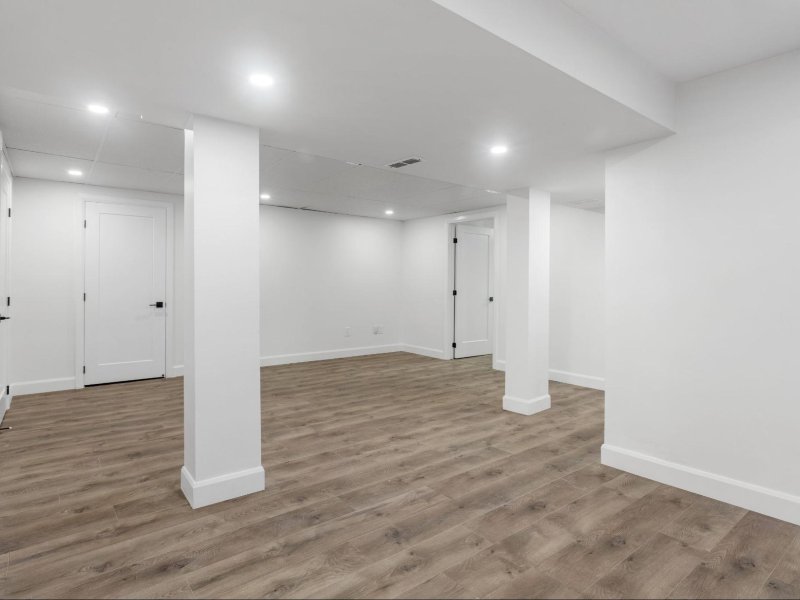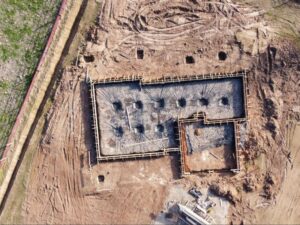Hardwood floors add timeless beauty and warmth to any home, and their installation is a significant investment that can transform the look and feel of your space. Whether you’re upgrading from carpet or laminate or installing hardwood for the first time, proper preparation and understanding of the installation process are crucial for a successful and long-lasting result.
Understanding the Hardwood Floor Installation Process
Assessment and Planning
The first step in hardwood floor installation is a thorough assessment of your space. A professional installer will measure the area, check for moisture levels, and assess the condition of the subfloor. This information is vital for choosing the right type of hardwood and installation method.
Choosing the Right Hardwood
There are various hardwood species, each with its unique characteristics and appearance. Common choices include oak, maple, cherry, and walnut. Our friends at BobVila.com states how it is important to also consider factors such as durability, color, and grain pattern when selecting the right hardwood for your home. Additionally, decide between solid hardwood and engineered hardwood, with the latter being suitable for areas with fluctuating humidity levels.
Acclimation
Before installation, hardwood needs to acclimate to the environment of your home. This involves storing the hardwood planks in the installation area for a specific period, allowing them to adjust to the temperature and humidity. This helps prevent issues like warping or buckling after installation.
Subfloor Preparation
The subfloor, the layer beneath the hardwood, must be clean, dry, and level. Any imperfections or irregularities in the subfloor can affect the integrity of the hardwood installation. The installer may need to make adjustments, such as sanding down high spots or using leveling compounds to address low areas.
Installation Method
Hardwood floors can be installed using various methods, including nail-down, staple-down, glue-down, or floating. The choice depends on factors such as the type of hardwood, the subfloor material, and the location within your home. For example, nail-down installation is common for solid hardwood on plywood subfloors, while glue-down may be suitable for concrete subfloors.
Installation of Underlayment
In some cases, an underlayment may be used between the subfloor and the hardwood. This adds a layer of insulation, reduces noise, and provides additional support. The type of underlayment used depends on the installation method and the specific needs of your space.
Hardwood Floor Installation
With the preparation complete, the actual installation begins. Each plank is carefully placed according to the chosen installation method. The installer will pay attention to patterns, ensuring a visually appealing result. Precision and attention to detail are crucial during this phase to achieve a seamless and professional finish.
Finishing Touches
After the hardwood planks are installed, additional steps may be taken to enhance the appearance and durability of the floor. This can include sanding and refinishing for a smooth surface, adding stain or finish for color and protection, and installing baseboards or trim to provide a finished look.
Clean-Up
Once the installation is complete, the area will need a thorough cleaning to remove any dust or debris. Proper cleanup is essential to ensure that the newly installed hardwood floors remain in pristine condition.
How to Prepare for Hardwood Floor Installation
Choose the Right Professional Installer
Finding a reputable and experienced hardwood floor installer is crucial for a successful installation. Look for recommendations, read reviews, and ask for references. A skilled professional will not only ensure proper installation but also provide guidance on the best hardwood options for your specific needs.
Budget Considerations
Hardwood floor installation is an investment, so it’s essential to establish a realistic budget. Consider the cost of materials, installation labor, and any additional expenses, such as underlayment or floor preparation. Having a clear budget will help you make informed decisions throughout the process.
Selecting Hardwood and Finishes
Spend time researching and selecting the right hardwood species and finishes for your home. Consider factors such as the level of foot traffic, the desired aesthetic, and your lifestyle. Take advantage of samples and swatches to see how different options look in your space before making a final decision.
Prepare the Installation Area
Before the installer arrives, prepare the installation area by removing furniture, rugs, and any obstacles. Clearing the space allows for a smoother and more efficient installation process. Additionally, ensure that the installer has easy access to the work area.
Plan for Acclimation
Understand the acclimation requirements for your chosen hardwood. This may involve storing the flooring in the installation area for a specific duration. Plan accordingly, and communicate with the installer to ensure a seamless transition from acclimation to installation.
Address Subfloor Issues
If your subfloor requires attention, such as repairs or leveling, address these issues before the installation begins. A well-prepared subfloor is essential for the longevity and stability of your hardwood floors.
Coordinate with Other Contractors
If your hardwood floor installation is part of a larger renovation or construction project, coordinate with other contractors to ensure a smooth workflow. This includes scheduling the installation at the appropriate stage of the overall project and addressing any collaborative efforts, such as coordinating with HVAC professionals for climate control.
Plan for Disruption
Hardwood floor installation can be disruptive to your daily routine. Plan for temporary relocation if necessary, especially if the installation covers high-traffic areas like living rooms or kitchens. Clear communication with the installer about your schedule and any specific requirements can help minimize inconvenience.
Follow Maintenance Guidelines
Once the hardwood floors are installed, it’s essential to follow proper maintenance guidelines to protect your investment. This includes regular cleaning, avoiding excessive moisture, and using recommended cleaning products. Understanding how to care for your hardwood floors will contribute to their long-term beauty and durability.








